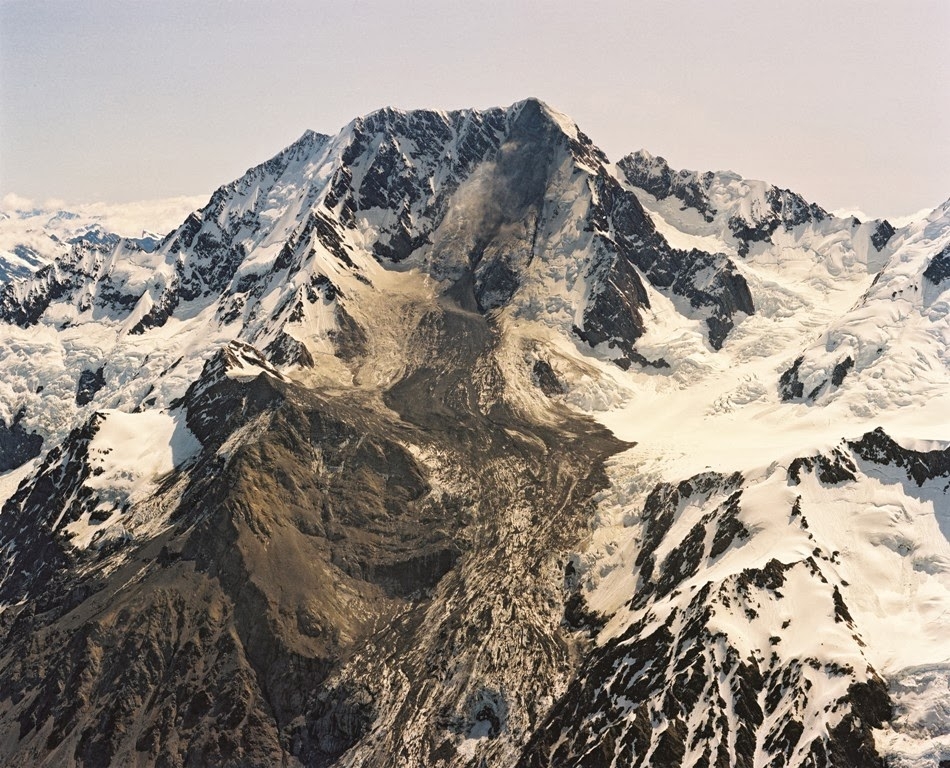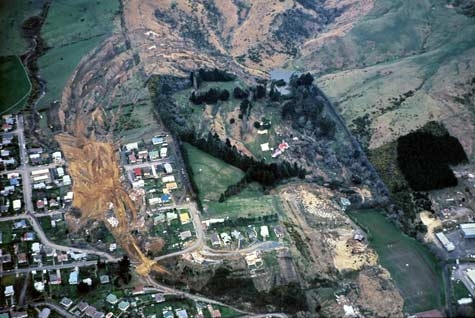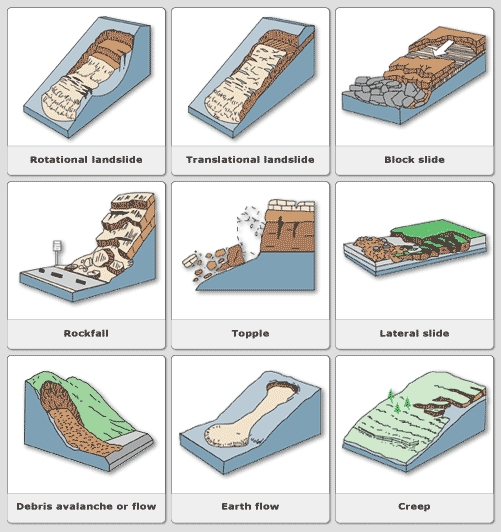Unstable land
Compared to many other countries, New Zealand has a high number of landslides because:
- land is still being uplifted
- rocks are often weakened by geological folding and faulting
- there are frequent earthquakes
- much of the land is hill country, formed by rivers cutting into soft clay rocks
- slopes can be unstable, weak layers of volcanic ash or loess
- rainfall can be high.
Some landslides move whole mountain sides, taking millions of cubic metres of material, at up to 200 kilometres per hour. Others are shallow or slow, moving only a few centimetres a year.
Causes
On unstable slopes, three things are important in producing large landslides:
- land conditions, such as weak rock and steep slopes
- processes which further weaken the slope, such as deforestation or undercutting by streams
- triggering factors such as intense rainstorms (100 millimetres or more in 24 hours) and large earthquakes (magnitude 7 or greater)
Human impact
Deforestation has had the largest impact on the stability of hillsides. Clearing land for farming has increased landslide activity by about seven times its natural rate. Road construction and subdivision earthworks can also destabilise slopes and increase landslide rates.
Cost
Each year local councils, roading authorities, private landowners and railway operators spend millions of dollars clearing slips from roads and railway lines. It is a never-ending task – there are always more floods or earthquakes to come, and there is plenty of rock and soil waiting to tumble down.
In general, landslides are more common in New Zealand than many other countries because of the terrain and less stable conditions. However, landslides cause few deaths in New Zealand because there are few settlements in mountainous areas and the population density is relatively low.
Before
- Find out if there have been landslides in your area before and where they might happen again.
- Check for signs that the ground may be moving.
- Watch the roadside for collapsed pavements, mud and fallen rocks.
During
- Act quickly - getting out of the path of a landslide is your best protection.
- Evacuate straight away. Take getaway items with you and your pets if you can safely do so.
- Warn neighbours who might be affected and help those you are able to.
- Contact emergency services and your local council to tell them of the hazard.
After
- Do not return to the area until you are told it is safe.
- Avoid dangling and broken power lines.











